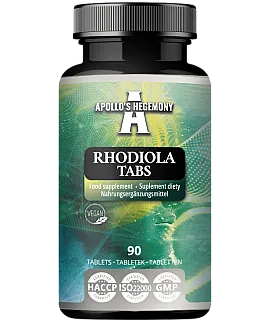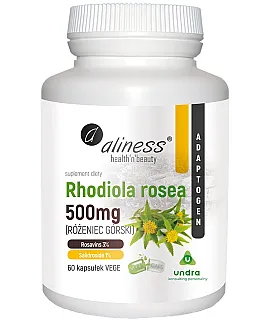How does Rhodiola rosea work? Learn about its properties!
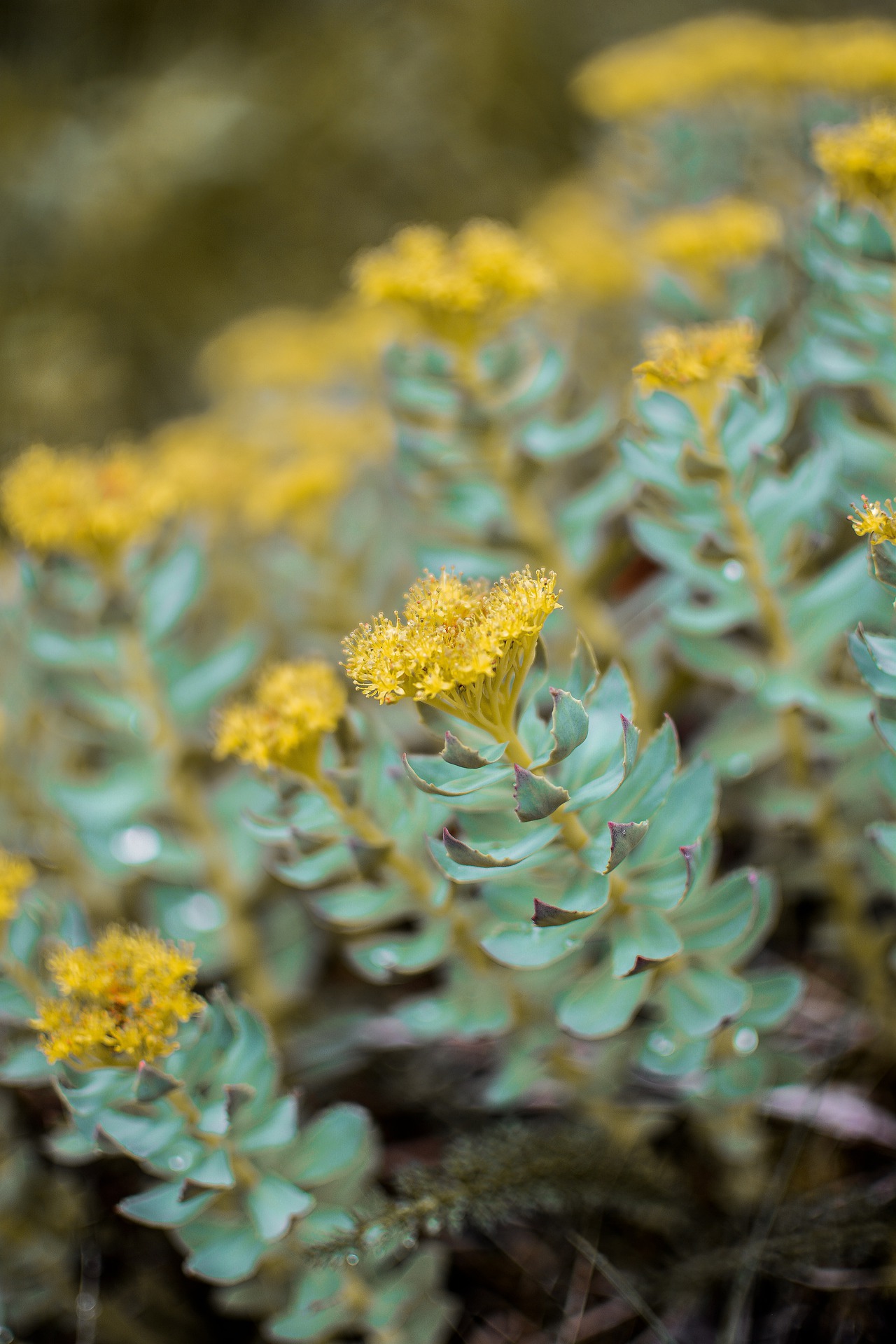
Skillful selection of herbs can effectively strengthen the body. Rhodiola rosea is one of those that strengthen the most. It is considered an adaptogen, so it helps deal with different types of stress. It also has a noticeable effect on mood and increases the body's capabilities.
- History of Rhodiola rosea in folk medicine
- Adaptogenic and health properties of Rhodiola rosea
- Rosavins and salidrosides - the main active substances in Rhodiola
History of Rhodiola rosea in folk medicine
Rhodiola rosea flowers are characteristic of the northern part of the globe. It is particularly found in northern parts of China and Russia, as well as in Scandinavian countries. It is also found in Poland, although its region of occurrence is limited to the Sudeten and Carpathian Mountains. The Polish name of Rhodiola is Rosacea montana. Traditionally, its roots were used in the form of infusions and tinctures.
In modern times, Rhodiola has been intensively tested mainly by Russian and Swedish scientists. It is considered one of the flagship adaptogens.
Adaptogenic and health properties of Rhodiola rosea
The main fiddle in Rhodiola's action is physical and mental strengthening, with a reduction in the feeling of fatigue. In a publication by A. Panossian(one of the main scientists working on Rhodiola research) we can find a summary that in preclinical studies the following actions were revealed :
- neuroprotective,
- cardioprotective,
- anti-fatigue,
- antidepressant,
- anti-anxiety,
- nootropic,
- prolonging life,
- stimulating the central nervous system.
Rhodiola has anti-inflammatory and antioxidant effects. Thus, among other things, it can affect the potential protection against heart and brain diseases (such as stroke, heart attack, depression and Alzheimer's disease).
Rosavins and salidrosides - the main active substances in Rhodiola
There are many biologically active substances in the root of Rhodiola rosea, but two groups attract special attention. These are salidrosides and rosavins. It is for these two substances (or one of them) that Rhodiola extracts used in supplementation are standardized. However, these are not the only constituents that are biological, as it contains: monoterpene alcohols and their glycosides, cyanogenic glycosides, aryl glycosides, phenylethanoids, phenylpropanoids and their glycosides, flavonoids, flavonolignans, proanthocyanidins and gallic acid derivatives.
By nature, the root of Rhodiola Rosea contains rosavins and salidrosides in a ratio of about 3:1. This coincides with the standardization of the most popular extracts of this plant, which is 3% rosavins and 1% salidrosides. However, some extracts have a higher proportion of salidrosides, such as 3%, in which case the amount of rosavins may not be specified. These less standard extracts are produced under the assumption that salidrosides are much more active and more important substances for us than rosavins.
Rhodiola's effects on stress
Rhodiola rosea root extract is an adaptogen that works to increase the body's resistance to stress, exhaustion and fatigue. According to scientists, it has a unique mechanism of action: it normalizes the release of stress hormones, while boosting energy metabolism by activating ATP synthesis in the mitochondria.
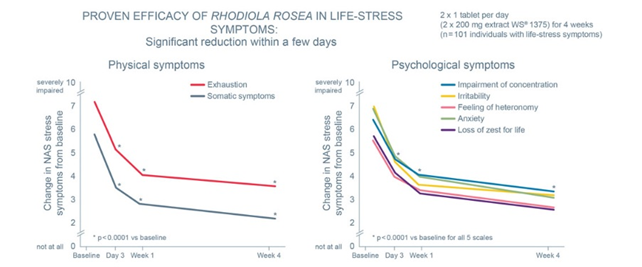
A decrease in physical and psychological symptoms of life stress after just a few days of supplementation with Rhodiola rosea extract tablets. Source - PMID: 29325481
The chart above illustrates the effects of one clinical trial involving Rhodiola extract. It involved 101 people who noticed symptoms of chronic stress in their lives, both physical and emotional. During the study, they were to take a tablet with 200 mg of Rhodiola root extract twice a day, or a total of 400 mg per day. In the results, analysis of all parameters showed a significant and consistent improvement in symptoms of stress, fatigue, quality of life, mood and concentration. The marked improvement was observed after just three days of supplementation and persisted throughout the 28-day study period.
Sources:
- Panossian A, Wikman G, Sarris J. Rosenroot (Rhodiola rosea):
traditional use, chemical composition, pharmacology and clinical
efficacy. Phytomedicine. 2010 Jun;17(7):481-93. doi:
10.1016/j.phymed.2010.02.002. epub 2010 Apr 7. PMID: 20378318. - Anghelescu IG, Edwards D, Seifritz E, Kasper S. Stress management and
the role of Rhodiola rosea: a review. Int J Psychiatry Clin Pract.
2018 Nov;22(4):242-252. doi: 10.1080/13651501.2017.1417442. epub 2018
Jan 11. PMID: 29325481.
 ⮜ Previous article
⮜ Previous article
Vitamin B6 vs. homocysteine - what doses to use?
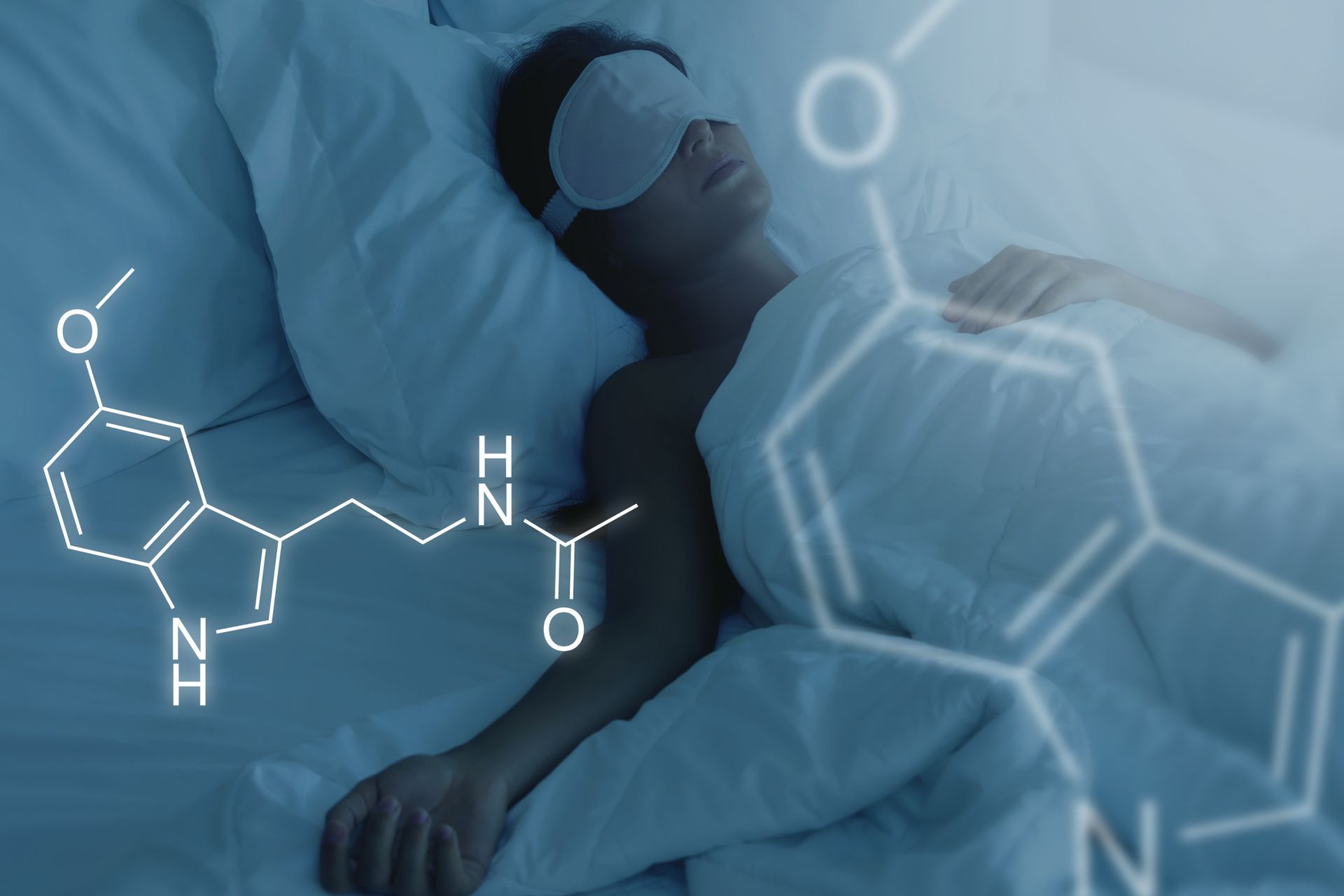 Next article ⮞
Next article ⮞

